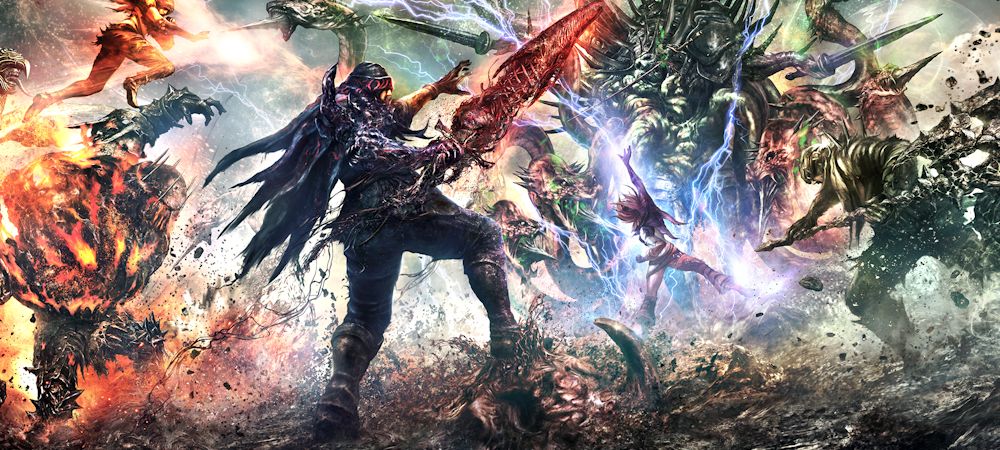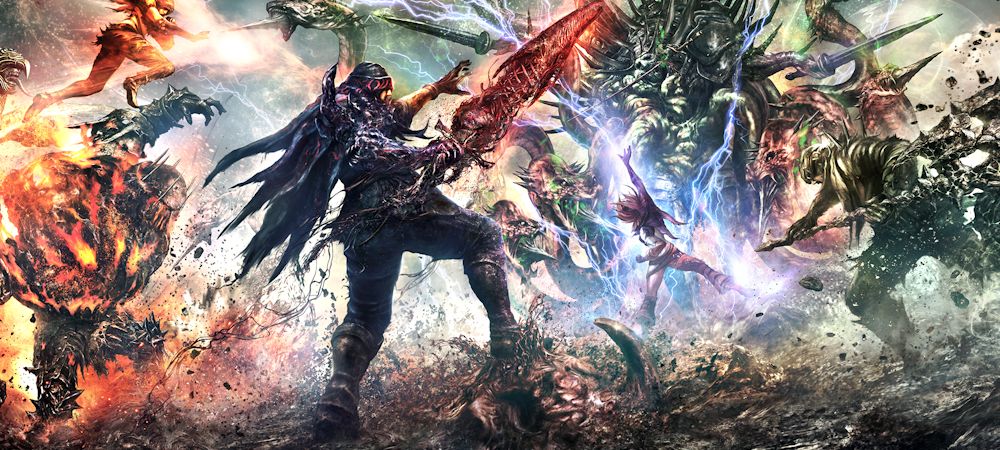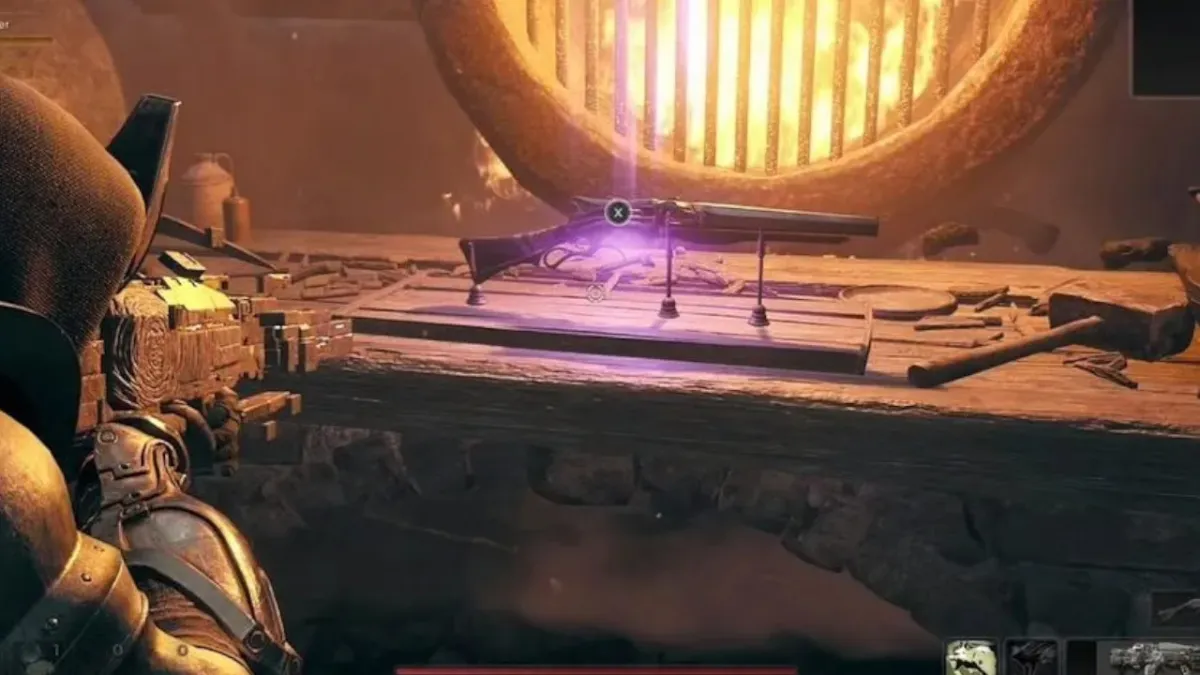Never gonna give you up
PlayStation Vita owners know a lot about compromise. One has to wait an excruciatingly long time between remarkable, must-have releases, but when those releases come, many would agree the wait was worth it. It’s fitting then, that the latest must-have is all about compromise.
Soul Sacrifice asks the player exactly how much they’re willing to give up in exchange for raw power — a question the PS Vita itself embodies so well. My own history with the Vita has indeed seen me surrender much of my patience and goodwill … but the rewards, such as they are, make up for it.
True to itself, Soul Sacrifice is one such reward.

Soul Sacrifice (PS Vita)
Developer: Marvelous AQL, SCE Japan Studio
Publisher: Sony Computer Entertainment Japan
Released: April 30, 2013 (US), May 3, 2013 (EU)
MSRP: $39.99
Soul Sacrifice begins in less than pleasant circumstances. The world has effectively ended, those left alive in the resultant apocalypse are imprisoned, waiting their turn to be fed to the powerful sorcerer Magusar. As one such prisoner, you have only one chance to escape the dinner bell — read a sentient journal of one of Magusar’s fellow sorcerers, and relive the past to learn a way to defeat him.
The journal, as well as providing commentary and company, serves as a hub from which players can select missions, create a character, and equip new gear. The general structure is very similar to Monster Hunter or Ragnarok Odyssey — you select missions, complete them, unlock more, and gain power along the way. Missions almost always involve entering a map and killing a certain number of monsters, though there are occasional collection quests to break up the slaughter.
Although each mission is supposed to tell the story of a specific mystery sorcerer, players are free to create a male or female character and choose various facial features, hair styles, and costumes. The character can be changed at any time, allowing one to swap body parts and even genders on a whim. Up to six weapons — known as “offerings” — can be equipped on the character sheet page, and as the game progresses, sigils can be worn to boost various stats. Elsewhere in the book, a number of missions in various flavors can be undertaken — including a series of side-chapters, timed special challenge stages, and a whole list of non-story battles.
Battles are generally simple affairs, though there’s a slight tactical bent to proceedings. Equipped weapons can be summoned by pressing a corresponding button, and then used for a limited time until they drain. The strength and duration of each weapon varies depending on the offering, and each one can only be summoned a certain number of times per mission. If the weapon is summoned one too many times, it will break and be lost. However, hidden items in each map can replenish their uses, and they become fully restocked at the end of every stage.
Once a weapon’s in play, enemies are attacked by simply hitting the weapon’s bound button over and over again. Timing your attacks to coincide with enemy moves can counter said enemies for a one-hit kill, and there’s a dodge roll to avoid taking damage. A large part of your success in battle is getting used to the various types of weaponry and how they behave.Weapons taking the form of a giant arm are slow and powerful, some weapons can be launched like mortars or thrown like missiles, and others are used as group or self-healing spells. Further, weapons corresponding to certain elements will do more damage to vulnerable enemy types, and working out which weapons to use, as well as sorting the good ones from the bad, is a big part of the action.
In the world of Soul Sacrifice, monsters are formed from living creatures that were transformed through a nefarious pact, and when a creature has been defeated, it turns back into its original form. Orcs, for example, become dying cats, while a Goblin will transform into a pack of dying rats.

As the former beasts lay dying, players are given the option to save or sacrifice them, and the choice directly effects character development — saving creatures can boost one’s defense, while sacrificing them raises attack power. Victims can be spared or killed in any combination, and as players level up in any given direction, they’ll gain access to unique sigils that boost their given path. Players can save more lives to become Divine sorcerers, end them to become Dark, or dish out justice evenly to remain on a Neutral path.
Along the way, players will be defeating boss monsters that once were human sorcerers, and choosing to kill or spare them will result in even bigger boosts. Furthermore, sparing these characters will unlock them as ally characters. Non-story missions can be played with two AI-controlled allies, and they too are subject to the player’s mercy — should an ally fall in battle, players may choose to save them and keep them in the fight, or sacrifice them for a one-shot powerful magic attack that decimates the entire area.

Players are graded on their performance at the end of each mission, and gaining higher clear ranks will result in better offering rewards. Avoiding damage, clearing stages quickly, using strong elements against monsters, and sacrificing large amounts of monsters all contribute to the ranking, and it has to be said that the sacrificial routes are favored more. Again, this is all part of the game’s idea of balance — if you’re not prepared to risk someone or something, it’s harder to come out on top.
The game loves to reinforce the idea that every action has a consequence. Choosing to spare and sacrifice fellow sorcerers can unlock new mission paths, and may even make your allies abandon you if they disagree with an action. When sacrificing monsters, one can regain weapon uses, but sparing them replenishes some health. If you want to be a defensive character, you’ll do so at a direct cost to your offensive power, while a player focused solely on attack strength will be highly vulnerable to enemy blows. Neutrality may be a wise option, but one could end up becoming a master of nothing.
Strangely, however, Soul Sacrifice contradicts its own message by being very lenient in the consequence department. By talking regularly to the Journal, players acquire Lacrima — a tear-like liquid taken from the book’s eyes. Using this liquid, players can rewrite history and ostensibly undo anything. A sacrificed sorcerer can be resurrected, levels in the Divine or Dark path can be rebalanced, and lost weapons may be recovered. Lacrima is acquired in such high volumes that one never runs out, either, meaning that sacrifice, ironically, is temporary and easily undone. It’s a shame there couldn’t at least be some reward for keeping sacrifices as they are, but sadly it becomes a swift no-brainer to splash on some Lacrima and get your toys back.

Though it may undermine its premise, one sacrifice that can never be reversed is the amount of time a player can so easily sink into the thing. Even though I’ve been playing Soul Sacrifice for review purposes, the more than thirty hours I’ve invested in the game have been given up gladly. It’s a time sink of addictive proportions, and I’ve found it difficult to stop playing as I find more weapons, farm duplicates of those weapons to upgrade them, and explore the vast, overwhelming amount of content on offer. That, and trying to unlock new costumes to see what bizarre and twisted raiments appear next.
As enslaving as Soul Sacrifice is, however, it lends itself a bit too well to repetition. There are tons of missions, but after a while, they all get to be a bit samey. I’ve fought reskinned versions of orcs and goblins to the point of nausea, and there’s a regurgitated handful of bosses that keep popping up. Of course, new weapons are always appearing, and the combat is satisfying enough in its high-impact, cathartic button-mashing to make up for it, but one can certainly grow tired of fighting the same old mutant felines.
If one thing truly lets combat down, however, it’s the way in which it registers ally attacks. Friendly fire is by far the most excruciating part of battle, as while attacks from one’s partners deal no damage, they act exactly like blows from an enemy — constantly knocking you to the floor and breaking your combos. Melee weapons don’t seem to have this problem, but rolling attacks and mortar-like projectiles will send the player flying if they’re anywhere near the impact area. It’s such a common occurrence that I found myself killing off any character with an abundance of projectiles or boulder-like transformation powers, as their performance on the battlefield was as harmful to my enjoyment as the enemy.

AI-controlled allies are, in general, an ordeal. If they lack the ability to self-heal, they’re borderline worthless, as they’ll die quickly and cannot be relied upon to stand still for your own group heals even when commanded to. One can expect to spend a lot of time babysitting them if they want to keep them, and you can bet the enemies won’t just stand around and let your rescue animations complete. Saving allies also requires you give up a portion of your own life bar, which only doubles the frustration.
My one other major irritation comes in the form of flying creatures, especially those few winged bosses. Although several weapons offer ranged attacks, they are generally too slow and unwieldy to hit some of the faster moving creatures, who happily fly out of range. One particular boss, the Elven Queen, has a nasty habit of backstepping long distances, causing attacks to miss and forcing players to chase her around the map — a frequent pain, considering a wasted weapon really does mean something in this game. These occurrences don’t make for particularly tough battles, but they are nonetheless cause for some under-the-breath cursing.
Even with these annoyances, however, Soul Sacrifice refuses to let its brilliance be drowned out. The otherwise simplistic nature of the combat is bolstered immensely by the little touches of tactics and balance that make this game what it is.

If you yourself happen to fall in battle, you can command your own allies to rescue or sacrifice you. If you’re saved, you get up and keep fighting, but if you’re sacrificed, you get to remain on the battlefield as a passive-aggressive influence, given a limited ability to raise your friends’ attack power and decrease the enemy defenses by poking them on the touch screen. It’s a nice touch that, once again, uses the sacrifice premise quite cleverly.
Another cool use of the premise involves the use of Black Rites. These are special, last-ditch attacks that require you give up your own body parts in order to perform a devastatingly powerful attack. Best used against powerful bosses, and only when the chips are down, these spells will deal immense damage at a high cost.
For example, one attack summons a squad of eyeballs that shoot a petrifying laser, but the player has to tear out his or her own eye to use it. For the rest of the battle, and all subsequent missions, vision will be restricted to an obscured tunnel — an issue that can only be fixed with an application of Lacrima once the initial fight is over. Once again, the easy reset renders a lot of the risk moot, but it can still be a weighty decision, especially if one performs the rite too early in a lengthy fight.

The game can be taken online or played locally in a team of four, allowing for some jolly cooperation. Multiplayer fights play out exactly like a solo fight, with the addition of some fun little chat commands that can be brought up with a pleasantly convenient flick of a touch-screen pop-up.Going online to show off one’s acquired moves and costumes is a good laugh in and of itself, and the potential to sacrifice your own friends for personal power is likely to prove a most engrossing aspect of the co-op experience. Unlike similar games, Soul Sacrifice‘s multiplayer doesn’t feel like the main focus, with solo play proving the robust draw, but its inclusion only helps round out the package.
While not the most visually impressive game on the PS Vita, we’re looking at a title that’s far from ugly. This is helped most by the wickedly twisted character designs, especially in some of the boss monsters, all of which are truly hideous, and even pitiful, to behold. The game has a pleasant little soundtrack of suitable, atmospheric music, and a strong — albeit limited — vocal cast that lends a British flavor that seems to be increasing in many Japanese localizations.

Soul Sacrifice, true to its driving idea, is a game of compromises. There’s a staggering wealth of content, but it can be tiring in its repetition. Battles are frantic and fun, but can be exhaustingly annoying if you choose the wrong friends. Very much like the game’s Lacrima system, however, many of the sacrifices one must make to enjoy the game are negligible in the long run, and there’s nothing that should stop one having a damn good laugh and getting utterly hooked on an adventure that really can be played until the Vita’s batteries run dry.
And one’s battery life may indeed be the greatest sacrifice of them all.





